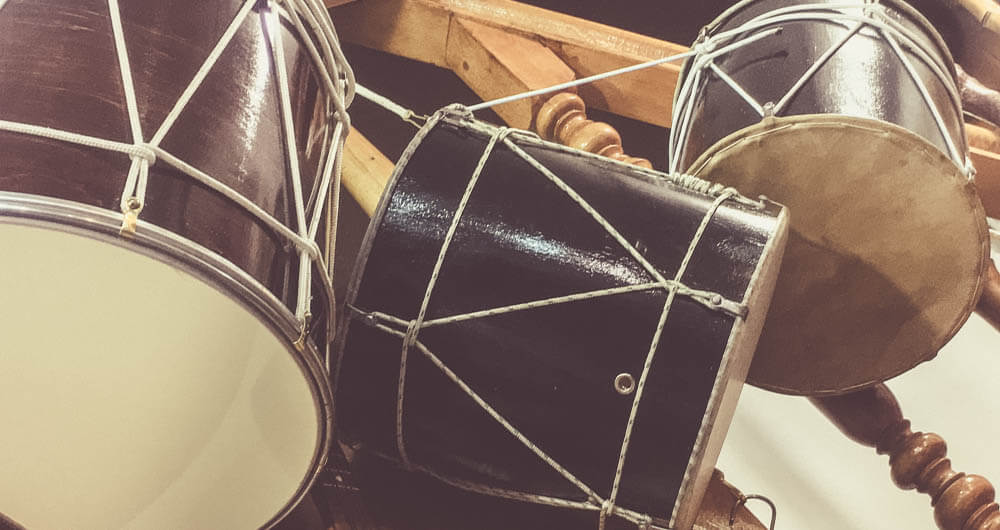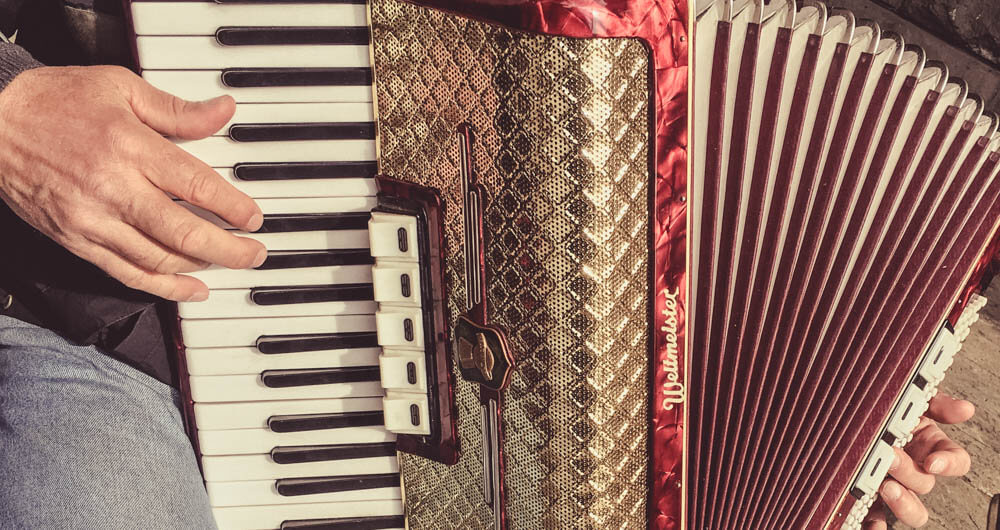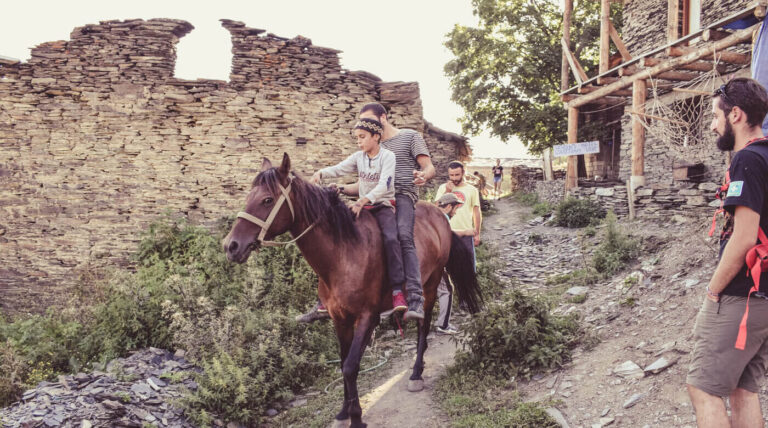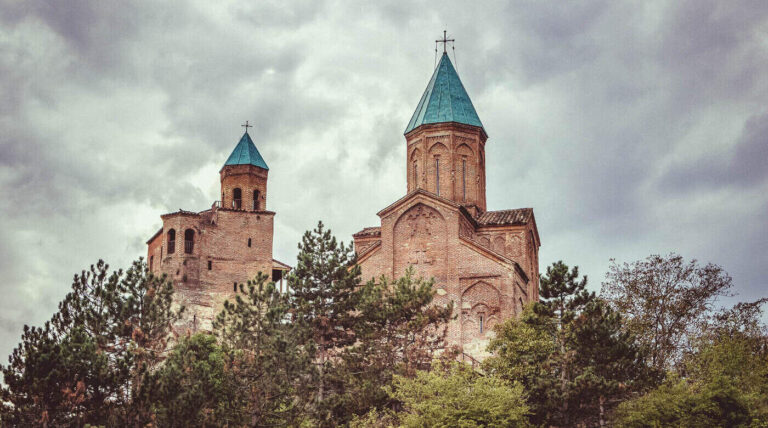5 unique instruments of the Caucasus region
Music plays an important role in the culture of all three South Caucasian countries. Therefore, some interesting instruments originate in the region. Let’s find out the top 5 unique instruments from the Caucasus Region and the differences between them.
As you probably know, the Caucasus mountains have a history connected with myths and legends, which have created a special culture in all its varieties: music, arts, lifestyle, and so on. The music of the Caucasus region is based on the national soul and the rituals of the people. That’s why it is very unique. While a good number of cultures and nations coexist in the Caucasus, Georgia, Azerbaijan, and Armenia are three countries that have had a unique and progressive musical culture that has been preserved over the centuries.
Here’s the list of 5 unique and traditional instruments the people in Southern Caucasus have been using for centuries.
1. Caucasian Dhol

It is widely known that the drum plays an important role in the Caucasian culture. It is universally the most popular percussion instrument played on any solemn occasion. It is believed that the first drums in the Caucasus appeared about 2,000 – 3,000 years before our era and were made of walnut wood. The drums were used initially for military signal purposes. Today, the range of use of the Caucasian drum is quite wide.
One of the most common models of the national Caucasian drum is called Dole. In the Caucasus, there are many names for this instrument: Dole, Lobes, Nagara, or Dhol. But all of them are structurally more or less the same. The Caucasians have their own peculiarity of Dole. The drum is placed between the knees or on the thigh and adheres to the hand. They play the instrument with their fingers or palms, sometimes with chopsticks as well.
In past centuries, the people of the Caucasus also played their drums with special sticks called Combal (Chomah, Dug Tchipot). It is interesting that these sticks were of different thicknesses and lengths and that they were carved out of different wood species. Depending on the strength and place of impact, the timbre and volume of the drum changed. These different sounds are akin to a divine one, which forces one to dance or even cry. Each musician can convey through this seemingly simple instrument his emotions and his voice instead of just drumming.
2. Caucasian accordion

The Accordion (Garmoni) came to Georgia and Armenia from Europe and immediately became popular among folk musicians. The queen of the holidays, it is like the Caucasian drum, is assigned the most important historical and cultural role. It is especially popular in the Tusheti, where it is used as an accompanying instrument (together with vocals) and also as a solo instrument.
The Buzika is a kind of small accordion widespread especially among the mountain inhabitants of Georgia, with its own distinct sound. It is considered a women’s instrument, and often a bride was presented with a buzik at the time of her engagement. It was widely used for national holidays, festivals, and parties, and is associated mainly with song and dance melodies.
«Even if we all die to one, let this accordion be forever, and whoever plays it and remembers us will be our brother» – a quote from the Nart epic.
3. Caucasian Dombra
The prototype of the current Caucasian Dombra is more than 4,000 years old and is one of the first plucked instruments, the forerunner of modern musical instruments of this kind. In the Caucasus, there are many names for this instrument: in Azerbaijan, it is known as Saz, and in Georgia as Panduri. The mention of the dombra is found in the writings of the famous traveler Marco Polo: «This tool was present among the warriors of the Turkic nomads, who at that time in Russia were called Tatars. They sang and played on him before the battle, to achieve the appropriate attitude».
The origins of the Dombra can be traced back to an old legend that is still told today. In ancient times two giant brothers lived in Altai. The younger brother had a Dombra, in which he loved to play. The elder brother was arrogant and conceited. Once he wanted to become famous, for which he decided to build a bridge over a stormy and cold river. He began to collect stones, to build a bridge, but the younger brother played all day long and didn’t help his brother.
So the day passed, and the other, and the third. The older brother got angry, snatched the Dombra from him, and hit it on the rock. A magnificent instrument crashed, and the melody was silenced, but an imprint remained on the stone. Many years later. People found this imprint and began to make new dombras on it, and again the music began in the villages that were silent for a long time.
4. Caucasian Duduk
The Caucasian Duduk is one of the oldest wind instruments in the world, which is almost unchanged. Being borrowed in other countries and becoming an element of the culture of other nations, the duduk underwent some changes over the centuries. As a rule, this concerned the melody, the number of sound holes, and the materials from which the instrument was made.
In various degrees, the musical instruments close to the duduk in design and sound are now available to many nations: Balaban is a folk instrument in Azerbaijan, Iran, Uzbekistan, Salamuri in Georgia and out of the Caucasus Region: Guan in China, Mei in Turkey and Chitriki in Japan.
5. Caucasian Ganun
The Ganun is a string instrument played either solo or more often as part of an ensemble. The name derives from the Arabic word Qanun, meaning «rule, law, norm or principle». The Qanun was introduced to Europe in the 12th century, its traditional music is based on maqamat. The instrument is a type of large Zither with a thin trapezoidal soundboard that is famous for its unique melodramatic sound.
The Ganun is played by plucking the strings either with the fingers or with flexible plectra attached to finger rings. It rests on the player’s lap or on a table.








